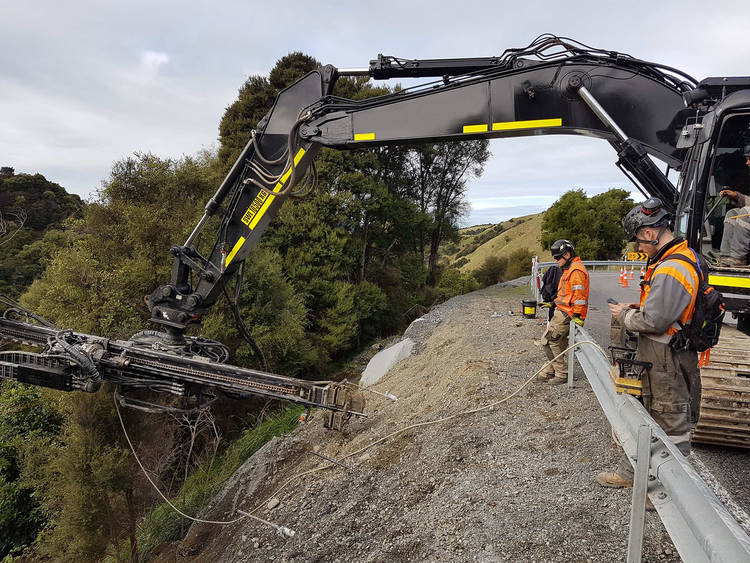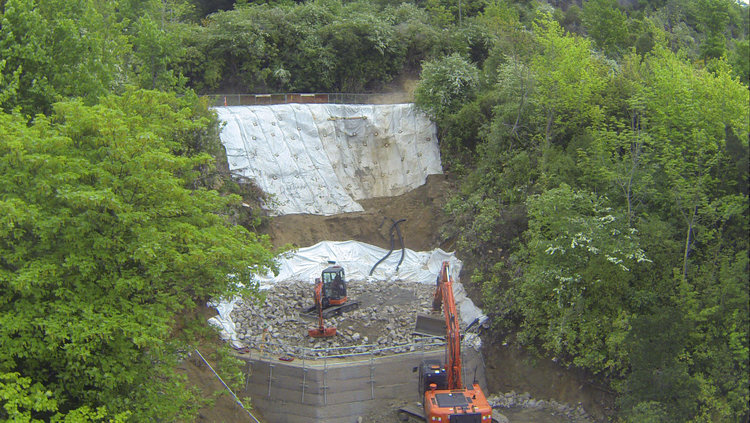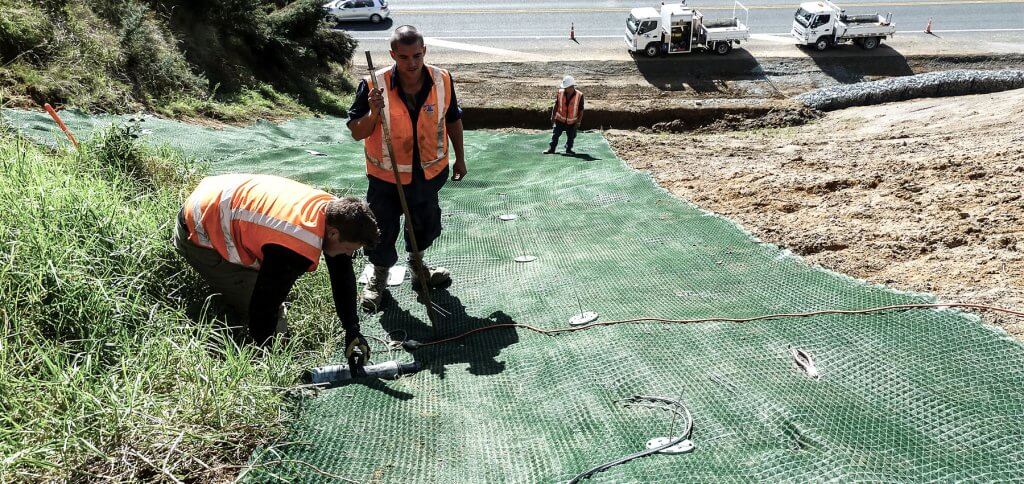Storm damage on our roads: why do slips happen when it rains?
Road closures and delays on our state highways and regional roads following storm events seem to be more common than ever. Some of the big events hit the headlines and cause major delays over days or even weeks, while dozens of smaller slips go unnoticed by the media but still cause untold headaches and delays to road users nationwide. Here we will look at why this is, and how we can do better in managing these disruptions.
Over-slips, that is material falling onto the road from above can be dangerous to motorists, as they often include rocks and boulders as well as earth. Over-slips can therefore be a hazard to motorists even when there is not enough debris to close the road, especially when they happen at night. However, these types of slips are quite easy to manage as the repair is often simply to remove the slip material and reopen the road. In many cases there is no pavement damage.

Under-slips where the road formation itself slips away are much more challenging to repair as the foundation of the road pavement has to be built back up to grade in such a way that it is stronger than its previous state. These are often major events incurring massive expense for road users and taxpayers.
While most of us have grown up knowing that slips happen in rainy weather, its very interesting to stop and look at why it is happening. Why is it that a downpour causes tons and tons of dirt to suddenly mobilise and crash down the hill? The common term we use, even on the road signs is “washout” which indicates that water has washed the slip away from the surface. In most cases this is not the cause of a slip.
Why do slips mobilise in a rainstorm?
Let’s think for a moment of soil strength. Imagine you could take a handful of soil and press it together into a ball, then try to break it through the middle by sliding one half away from the other half. A handful of crushed rock will be almost impossible to slide, while a loose sand or a soft clay will slide more easily.
This is demonstrating the shear strength of the soil, this is the inherent strength the soil has to hold itself (or the whole hillside) together. It is usually a combination of friction of the soil particles (in granular soils) and cohesion (in clay soils) Now think again of that sample in your hand. It will contain soil particles, moisture, and some air voids. If that sample of soil gets saturated, that is if all the air voids get completely filled with water then two things will happen to it. Firstly, It will become heavier, and unless it is a truly granular material then it will also become slipperier, or weaker!

Now imagine a common scenario of a section of road supported on the side of a hill. The weight of the soil is providing downward force due to gravity, and the strength of the soil (friction and cohesion) is providing resisting force, or strength.
So if the soil under the road becomes saturated in a storm, it becomes heavier and weaker, and in some cases it will slip away from the deeper more stable soil.
This usually takes the form of a circular slip plane, Next time you drive past a large slip site, look at the back of the scarp and often you can clearly see that circular shape.
Now lets talk about drainage
Therefore, we can see that we don’t want the soil under a road to become saturated, and in most cases especially in mountainous terrain it doesn’t have to because we can divert or channel the water away from the subgrade and into a natural watercourse. Water sitting on the surface or trapped near the roadway can cause subgrade saturation, and there are solutions such as Aqua Duct Fluming to channel this away, and Filter Sleeve and Geotextiles for subsoil drains to collect seepage. These are very cost-effective ways to prevent damage occurring.
The cheapest and most cost-effective slip repair prevention is to maintain existing drainage systems, as we mention in the video case study below. Clear out side drains, channel surface flows away from the road and repair cracks in the road surface.
<iframe allowtransparency=”true” title=”Wistia video player” allowFullscreen frameborder=”0″ scrolling=”no” class=”wistia_embed” name=”wistia_embed” src=”https://fast.wistia.net/embed/iframe/qt6uk1no5c” width=”400″ height=”225″></iframe>
What solutions are available to repair storm induced slips on highways?
There are a number of repair options available and a highway engineer will look for key indicators on site when choosing which repair system to utilise. This will include things such as the slip geometry, i.e. how deep is the affected area, how steep is the slope and what kind of soil is on the site. Shallow slips that are only 1 – 2 metres deep can still appear very significant in regards to impeding traffic but these can often be repaired a lot quicker with a system such as Shear Lock piles, a unique solution of steel piles that are driven from the surface, or Platipus ARGS anchors and a high strength turf reinforcing matting.
Deeper instability where the ground is moving but still largely in place are an ideal site for Platipus Anchors, which can be driven into the unstable ground and locked deep in the soil to stabilise the site.

Deep slips where the material has already failed and the site needs to be built up would usually be repaired with one of two options, either a pole wall with anchor tie backs, or with a MSE wall such as the DuraMesh system. This system has proven to be one of the most cost-effective solutions available to us for a number of reasons. The system has a 100-year design life, it is versatile enough to allow the designer to tailor it to a specific site, and in a lot of cases the repair will utilise local contractors and site material, further reducing cartage and fill material prices.
Drainage
Whatever repair solution is chosen, the designer will want to prevent it ever happening again, and referring to the earlier sections of this article, we can see that drainage is the key to this. Products such as DuraFlow will be placed against the slip face to collect any seepage, and subsoil drains will be wrapped with DuraForce or Filter Sleeve to collect this water and pipe it well away from the site.
So what can you do?
A better understanding of why slips happen is useful for both contractors and consultants when considering slip prevention and repairs. Take care of the simple things, clean out the drainage, use innovative solutions along with prudent engineering and you will be amazed at the outcome. Reduced cost, reduced road closures and a better experience for all of us as road users.
At Cirtex, we aim to reach the very highest in industry standards, both in safety and customer satisfaction. If you have any questions about us, our history, safety records or anything else that we do, please don’t hesitate to contact us. Our friendly and experienced staff will be happy to help in any way they can.


